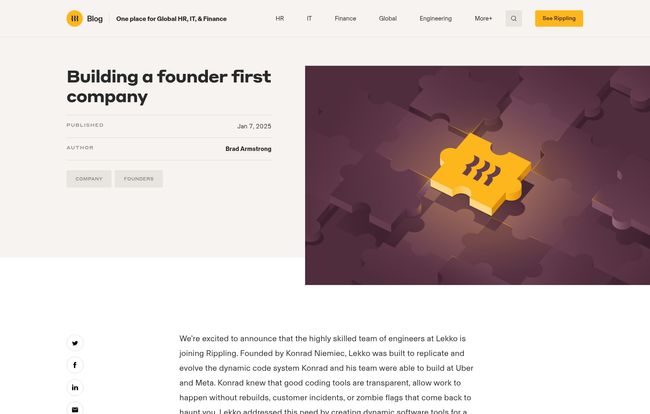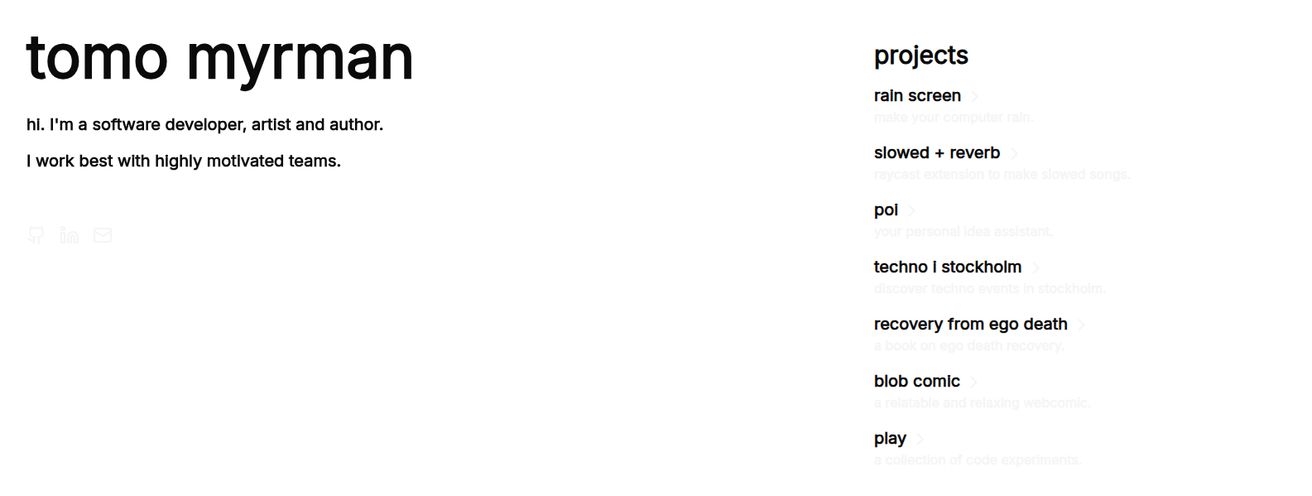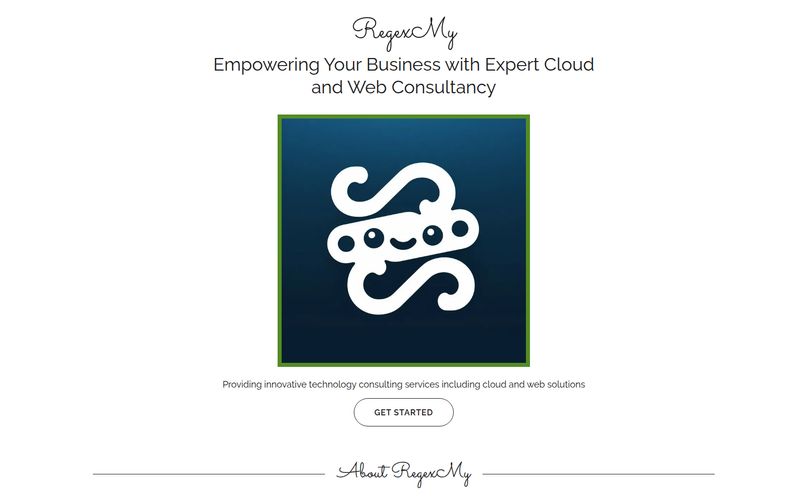If you’ve ever been involved in the operations side of a growing business, you know the chaos. You hire a new person, and suddenly you're juggling a dozen different browser tabs. One for payroll, another for benefits enrollment, one for ordering their laptop, and another for adding them to Slack, Google Workspace, and whatever other SaaS tools you're using. It's a digital ballet of copy-pasting, and one wrong move means your new marketing manager doesn't get their paycheck or, worse, has no access to their email. It's a headache.
I’ve seen this movie a million times. It's the classic “swivel chair” problem. And for years, the solution was… well, more software. More integrations, more duct tape, more Zapier recipes than a mad scientist's cookbook. But what if there was a different way? A single platform to rule them all? That's the big, audacious promise of Rippling.
What Exactly Is Rippling, Anyway?
On the surface, you might think, "Oh, another HR platform." And you'd be about 10% right. Rippling is what they call a “compound startup,” which is a fancy way of saying it does a lot of things. It’s not just an HR tool; it’s an employee management platform that weaves together HR, IT, and even Finance into one single system. Think of it less as a tool and more as the central nervous system for your entire employee lifecycle.
Everything is built around a single employee record. When you update an employee's role, their compensation, their manager, or their department in one place, that change ripples out (see what they did there?) across every connected system. Payroll adjusts, app permissions update, spending policies are reapplied. Automatically. It's a deceptively simple idea with some seriously powerful implications.
And they aren't standing still. I was reading their blog recently and saw they acquired a company called Lekko in early 2023. Lekko specialized in dynamic configuration tools for engineers. Now, that might sound a bit 'in the weeds', but what it tells me is that Rippling is obsessed with making its platform more flexible and powerful from the ground up. It’s not just about tacking on new features; it's about strengthening the core engine. That’s a good sign.

Visit Rippling
Breaking Down the Rippling Ecosystem
So what does this unified system actually do? It's best to think of it in three main parts, though the real magic is how they all talk to each other.
The Heart of the Operation Is Human Resources
This is the foundation. Rippling handles all the stuff you'd expect from a modern HRIS (Human Resources Information System). This includes onboarding, running payroll (they have a strong global payroll offering too, which is huge), managing benefits, and tracking time and attendance. But the difference is context. When you onboard a new hire, you’re not just entering them into a payroll system. You're kicking off a workflow that can do… well, almost anything. And that leads us to the next piece of the puzzle.
Taming the Wild West of IT Management
This, for me, is the real game-changer. Rippling connects HR data directly to IT tasks. So, during that same onboarding flow, you can have Rippling automatically order a new MacBook, set it up with the right security policies, and grant the new employee access to all the apps they need based on their role—Google Workspace, Salesforce, Slack, you name it.
Even more important is offboarding. I can't tell you how many companies I've seen where an ex-employee still had access to sensitive data weeks after they left simply because someone forgot to remove them from one of a dozen systems. It’s a massive security risk. With Rippling, you click one button to offboard them, and it’s a clean sweep: access revoked, laptop wiped, final paycheck calculated. Done.
Getting a Handle on Finance and Spend
The newest pillar is Spend Management. This includes corporate cards, expense reports, and bill payments. Again, because it's all connected, it’s smarter. You can create spending policies tied to an employee's role or department. A sales exec gets a card with a travel and entertainment budget; an engineer gets one with a software subscription budget. When they swipe the card, the expense is automatically categorized and reconciled. It eliminates the soul-crushing drudgery of monthly expense reports, and I am here for it.
The Magic Behind the Curtain Is The Platform Itself
The features are cool, but the real power of Rippling lies in its underlying platform capabilities. The Workflow Automator is a standout. It's like having IFTTT or Zapier built directly into your company's operating system. You can build custom, multi-step workflows with if/then logic for almost any process. For instance: "If an employee gets a promotion, then update their salary in Payroll, grant them access to the 'Managers' folder in Google Drive, and enroll them in the 'New Manager Training' course in our LMS." The possibilities are pretty much endless and it helps cut down on so much manual, repetitive work.
Their integration marketplace is also robust, connecting to hundreds of third-party apps. And their focus on Global Capabilities, especially with their Employer of Record (EOR) service, makes it a compelling choice for companies hiring talent all over the world. No more patching together different providers for different countries.
So, What’s the Catch? Let's Talk Pricing and Potential Downsides
Okay, it can't all be sunshine and automated workflows. Let's talk about the two things every business leader really wants to know: cost and limitations.
Rippling’s pricing starts at $8 per user, per month. But, and this is a big but, that’s just for the core platform. Every other module—Payroll, Benefits Admin, IT Management, Spend Management—is an add-on with its own price. This is both a pro and a con. On the one hand, its highly flexible. You only pay for what you actually need. On the other hand, the costs can add up quickly, and it can be tough to get a clear, final price without going through a full demo and sales process. There's no simple pricing grid on their site, which I know frustrates some people.
It's also important to remember what Rippling isn't. Their site has the usual disclaimers that they are not a law firm or an accounting firm. The tool provides incredible leverage, but it doesn't replace the need for professional tax, legal, or accounting advice. That’s just common sense.
Some people might argue that a “best-of-breed” approach is still superior—picking the absolute best tool for payroll, the best for device management, etc. And for a massive, complex enterprise with deeply entrenched legacy systems, they might be right. However, in my experience, for most startups and mid-market companies, the power of a truly unified system and a single source of truth far outweighs the marginal benefit of having five different “best” tools that dont talk to each other.
Who Is Rippling Actually For?
If you're a solopreneur or a tiny 3-person team, Rippling is probably overkill. But if you're a company that's hit, say, 10 employees and you're planning to grow to 50, 100, or even 1,000, that’s the sweet spot. It’s for the founder or operations leader who has felt the pain of disconnected systems and wants to build their company on a scalable, organized foundation from the get-go. It's for the modern, tech-savvy business that values efficiency and wants to give its employees a seamless experience from day one.
Frequently Asked Questions about Rippling
Is Rippling just another HRIS like Gusto or Zenefits?
No, not really. While it has a full-featured HRIS at its core, its key differentiator is the native integration of IT (app and device management) and Finance (spend management) into the same platform. This creates a much more powerful, unified system than most traditional HR tools.
How does Rippling's pricing actually work?
Rippling uses a modular pricing model. You pay a base fee for the core platform (starting at $8/user/month) and then add on the specific modules you need, like US Payroll, Global Payroll, Benefits Administration, App Management, etc. The final price depends entirely on which modules you choose.
Can Rippling handle paying employees in other countries?
Yes. Rippling has robust global capabilities. You can run payroll natively in several countries, and for others, they offer an Employer of Record (EOR) service that lets you compliantly hire, pay, and manage employees almost anywhere in the world without setting up a local entity.
What was the Lekko acquisition about?
Rippling acquired Lekko, a company specializing in dynamic configuration for software, in early 2023. This move suggests Rippling is focused on deepening the technical capabilities of its platform, allowing for even more flexibility and scalability for its customers and their developers.
Can I integrate my existing apps with Rippling?
Absolutely. Rippling has a large marketplace with over 500 pre-built integrations for popular apps like Slack, Google Workspace, Microsoft 365, Salesforce, and many more. This allows for deep automation between Rippling and the tools your team already uses.
The Final Verdict From a Jaded Ops Guy
Look, I've been around the block and I'm naturally skeptical of any tool that claims to be a silver bullet. Rippling isn't a magic wand that will instantly solve all your operational problems. It requires thoughtful setup and a willingness to embrace a new way of doing things.
But I have to admit, the vision is incredibly compelling. The idea of a single source of truth for all employee operations isn't just a nice-to-have; it's a strategic advantage. It saves countless hours of manual work, prevents costly mistakes, tightens security, and gives you a level of automation that was previously only available to giant corporations with custom-built internal tools. For a growing business looking to escape the chaos of disconnected software, Rippling might just be the powerful, unified platform you've been waiting for. It’s definitely worth a look.
Reference and Sources
- Rippling Blog: Building a founder first company
- Rippling Platform Overview: Rippling.com
- Rippling Pricing Information: Rippling Pricing



